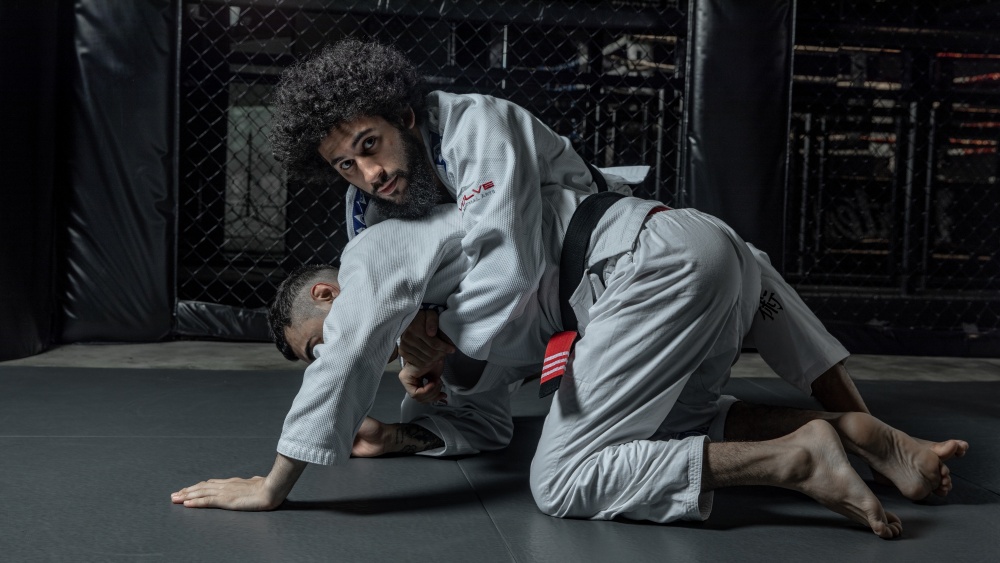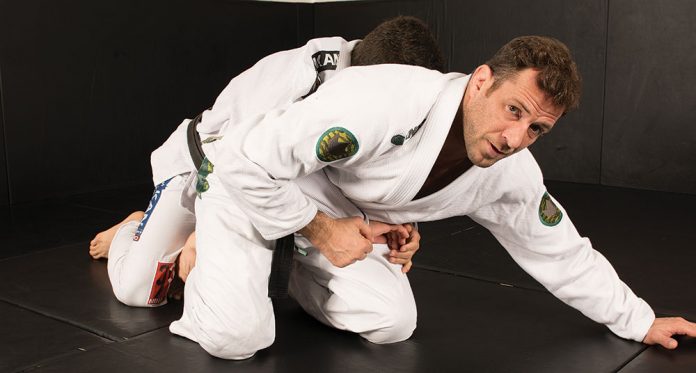The Complete Guide To The BJJ Turtle Position
Brazilian Jiu-Jitsu (BJJ) is a martial art that requires a deep understanding of various positions, transitions, and submission techniques. One of the most crucial positions in BJJ is the turtle position, which is both a defensive and offensive position. In this guide, we will take a comprehensive look at the BJJ turtle position, including its techniques, strategies, and how to use it effectively in your game.
Whether you are a beginner or a seasoned BJJ practitioner, mastering the turtle position can give you a significant advantage on the mat. By the end of this guide, you will have a complete understanding of the turtle position and how to use it to control your opponent, defend against attacks, and set up submissions. So, let’s dive in and explore the world of the BJJ turtle position!

The Complete Guide To The BJJ Turtle Position
Are you looking to master the BJJ turtle position? This guide will provide you with a step-by-step breakdown of the position and how to use it effectively in your Brazilian Jiu-Jitsu game. Whether you’re a beginner or an experienced practitioner, this guide will help you improve your skills and take your game to the next level.
What is the BJJ Turtle Position?
The turtle position is a defensive position in Brazilian Jiu-Jitsu that is used when an opponent has taken your back. To get into the turtle position, you need to get onto your hands and knees while tucking your chin to your chest, protecting your neck, and keeping your elbows tight to your body. Once you’re in the turtle position, you can defend against chokes and other attacks while looking for opportunities to escape or reverse the position.
There are several variations of the turtle position, but the fundamental principles remain the same. You want to protect your neck and limbs while looking for ways to regain control of the match. Here are some of the most common variations of the turtle position:
- Traditional turtle position
- No-hands turtle position
- Rolling turtle position
How to Use the BJJ Turtle Position Effectively
The turtle position is a defensive position, but that doesn’t mean you’re out of options. You can use the position to frustrate your opponent, tire them out, and look for opportunities to escape or reverse the position. Here are some tips on how to use the BJJ turtle position effectively:
1. Protect your neck and limbs. The first priority in the turtle position is to protect yourself from chokes and other submissions. Keep your chin tucked to your chest, and your elbows tight to your body. This will make it difficult for your opponent to attack your neck or arms.
2. Stay calm and conserve energy. The turtle position can be tiring, so it’s essential to stay calm and conserve your energy. Focus on your breathing and keep your movements slow and deliberate. This will help you conserve your energy and stay relaxed.
3. Look for opportunities to escape or reverse the position. While you’re in the turtle position, keep an eye out for opportunities to escape or reverse the position. Look for gaps in your opponent’s defense, and try to create space to maneuver. This could be an opportunity to roll out of the position or take your opponent’s back.
4. Use your hips to create space. When you’re in the turtle position, you can use your hips to create space and make it difficult for your opponent to control you. Try to move your hips in a circular motion to create space and disrupt your opponent’s balance.
5. Be patient. The turtle position is a defensive position, so be patient and wait for your opponent to make a mistake. Stay relaxed and focused, and look for opportunities to capitalize on your opponent’s mistakes.
The Benefits of the BJJ Turtle Position
The turtle position is an essential position in Brazilian Jiu-Jitsu, and mastering it can help you improve your overall game. Here are some of the benefits of the BJJ turtle position:
- It’s a defensive position that can help you protect yourself from submissions.
- It’s a great way to frustrate your opponent and tire them out.
- It can help you create opportunities to escape or reverse the position.
- It can help you improve your hip movement and control.
BJJ Turtle Position vs. Other Positions
The BJJ turtle position is just one of many positions in Brazilian Jiu-Jitsu. Here’s how it compares to some of the other positions:
1. Closed guard: The closed guard is a position where you’re on your back with your legs wrapped around your opponent’s waist. It’s an offensive position that allows you to attack your opponent with submissions and sweeps. The turtle position, on the other hand, is a defensive position that is used to protect yourself from attacks.
2. Mount: The mount is a dominant position where you’re on top of your opponent. It’s an offensive position that allows you to control your opponent and attack with submissions. The turtle position is a defensive position that is used to protect yourself from attacks.
3. Side control: Side control is a position where you’re on top of your opponent, but not in the mount position. It’s an offensive position that allows you to attack with submissions and transitions. The turtle position is a defensive position that is used to protect yourself from attacks.
In conclusion, the BJJ turtle position is an important position to master in Brazilian Jiu-Jitsu. It’s a defensive position that can help you protect yourself from submissions, tire out your opponent, and create opportunities to escape or reverse the position. By following the tips and techniques outlined in this guide, you can improve your skills and take your game to the next level.
**H2 Frequently Asked Questions**
**1. What is the BJJ Turtle Position?**
The BJJ Turtle Position is a defensive position where a practitioner tucks their head and limbs in close to their body while on their hands and knees. This position is often used when an opponent attempts to take the practitioner’s back or mount them. The turtle position is commonly used in Brazilian Jiu-Jitsu as a way to defend against strikes and submissions.
The key to the turtle position is to protect your neck, arms, and legs while minimizing your opponent’s ability to strike or submit you. By tucking your head and limbs in close, you create a smaller target for your opponent to attack. You can also use your hands and feet to block strikes or create space to escape.
**2. How do I escape the BJJ Turtle Position?**
Escaping the BJJ Turtle Position requires a combination of technical skill and physical strength. The first step is to create space between yourself and your opponent. You can do this by pushing off the ground with your hands and feet, or by using a technique called the “granby roll” to roll out from under your opponent.
Once you have created space, you need to work to improve your position. This may involve standing up and facing your opponent, or transitioning to a different guard position. It is important to stay calm and focused while escaping the turtle position, as your opponent will be looking for any opportunity to take advantage of your vulnerability.
**3. What are the benefits of using the BJJ Turtle Position?**
The BJJ Turtle Position can be a very effective defensive position, particularly when facing a larger or stronger opponent. By tucking your head and limbs in close, you make it difficult for your opponent to attack you with strikes or submissions. You can also use the turtle position to create space and work your way back to your feet.
Another benefit of the turtle position is that it allows you to conserve energy while defending yourself. By staying low to the ground and minimizing your movement, you can avoid expending unnecessary energy while your opponent tires themselves out trying to attack you.
**4. How can I improve my BJJ Turtle Position?**
Improving your BJJ Turtle Position requires a combination of technical skill and physical conditioning. You should focus on developing your core strength, as well as your ability to tuck your limbs in close to your body. You can also work on your defensive techniques, such as blocking strikes and escaping submissions.
One effective way to improve your turtle position is to drill the position with a partner. Start in the turtle position and have your partner attempt to strike or submit you. Practice defending yourself while tucking your limbs in close and minimizing your movement. With practice, you will become more comfortable and effective in the turtle position.
**5. How can I use the BJJ Turtle Position in competition?**
The BJJ Turtle Position can be a valuable tool in competition, particularly if you are facing a skilled striker or submission artist. The key is to use the turtle position strategically, rather than simply relying on it as a default defensive position.
In competition, you can use the turtle position to defend against strikes and submissions, while looking for opportunities to counterattack or escape. You can also use the turtle position to create space and stand up, or to transition to a different guard position. It is important to stay calm and focused while using the turtle position in competition, as your opponent will be looking for any opportunity to take advantage of your vulnerability.

Jiu Jitsu vs Wrestling – Understanding Turtle Position by Gordon Ryan
In conclusion, the BJJ turtle position is a valuable defensive tool that every Brazilian Jiu-Jitsu practitioner should learn and master. It’s a versatile position that can help you defend against a variety of attacks and transitions, and it can also be used as a launching pad for your own offensive attacks.
To become proficient in the turtle position, you’ll need to practice it regularly and focus on developing your awareness, balance, and mobility. You’ll also need to develop a good understanding of your opponent’s movements and anticipate their attacks.
Ultimately, the turtle position is a great example of how Brazilian Jiu-Jitsu can empower you with the ability to control and defend yourself in a variety of situations. By mastering this position, you’ll be well on your way to becoming a well-rounded, effective BJJ practitioner.

